Of course, the success of a cage trap also involves picking good locations. Using the right bait is another important consideration. But, the best bait in the world wont matter if the critters don't happen to walk by (which is the reason why lots of traps helps). Unfortunately, during year 1 of this course, the budget for lots of cage traps was limited by the budget for lots of camera traps. So, we'll have to add more cages in the future.
As it stood this time, we had four.
Not great, but every student group got to test their skills at setting them, and they were active for two trap-nights. With the very high numbers of raccoons, opposums and skunks on-site....I figured we'd get something.
So, we went about setting traps late afternoon on day 1. Personal scent control helps, but can be difficult to achieve with students....who often come to any and every group function (including lab) fully perfumed and cologned, with hair products to-boot. At the very least, I make them wear rubber gloves when handling the gear....I tell them not to let the cages touch their legs as they walk, if possible....and mention they should make an effort not to drip sweat in the vacinity of the trap set (a problem that, in truth, only afflicts their overweight professor). In reality, human scent is probably not a huge deterrent for things like Raccoons and Opossums anyways, but thinking about scent control is a good habit to maintain for trapping.
Bait this time was turkey-flavored cat food. It was cheap and I was in a rush, but that bait may have been a fatal flaw. Next time I'll go with a sardines and bacon grease mix, if I can find the time to make the concotion. We also applied a tiny bit of one of two scent lures (one was a shellfish oil based lure, the other a canine gland lure).
ANYHOO.....the next day, we marched out to the site....kevlar gloves, ketch-all pole and skunk tarp in-hand only to find:
Grrrr..........released with much cursing under my breath at the waste of bait.
The bait in the other traps was undisturbed.
We moved the traps to new locations....but by morning on day 2 we found that not even a feral cat was stirring. This time, however, just to see if it was lack of passersby OR critters being spooked by the cage, I had put a camera over one of the traps (set to video mode). During the 24 period anyways, nothing wandered by.
Above: note camera on the tree in the background.
More evidence that a greater number of traps would increase success rate.
Not as riveting as I would have hoped....but, as Sinatra would say:
"That's life!"
_________________________________________________________________________
Regardless, we did get some cool stuff on our cameras over the past week (you may remember that we moved these about a week ago).
It's the same cast of characters, basically. But that doesn't keep the students (and myself) from being excited that the locations they picked paid off!
Raccoons are literally everywhere out there now. We caught pics of them on all of the cameras, I think.
'Possums are less common, but still prevalent.....
Cottontails, too, have become very active (the rather side-long glance this one is giving the camera made me laugh).
Stinkers are in no short supply....
We also got a neat shot of a male walkin' bird showing off the goods to a nearby hen (left side of the frame).
This one puzzled me for a second or two.....
That is, of course, until I saw this picture....
I'll say it again.....Grrrr!
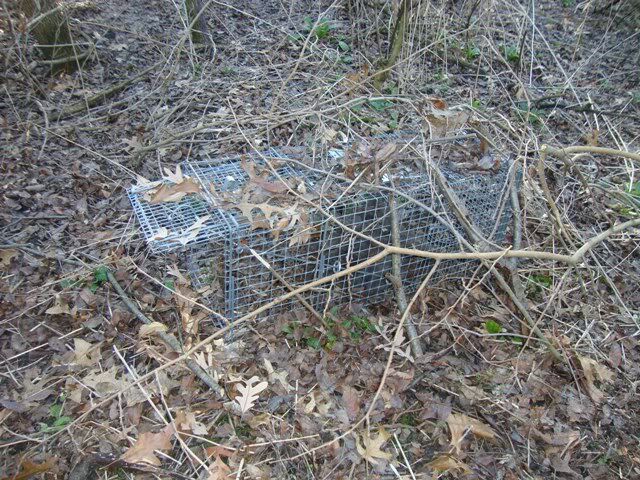
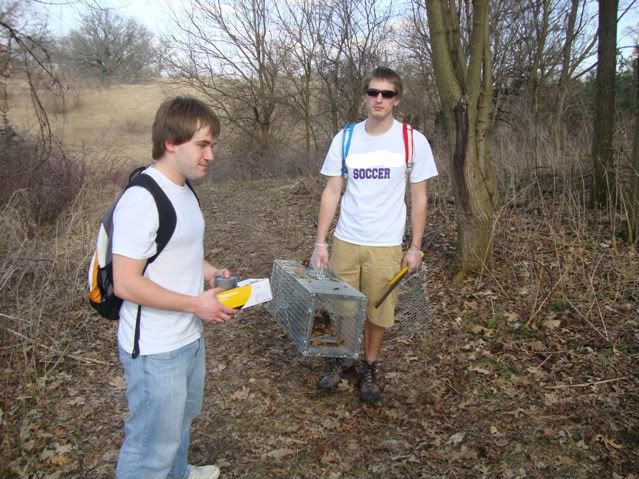
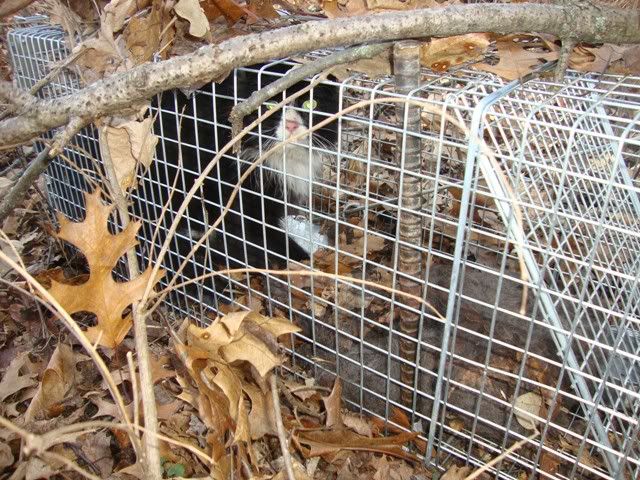

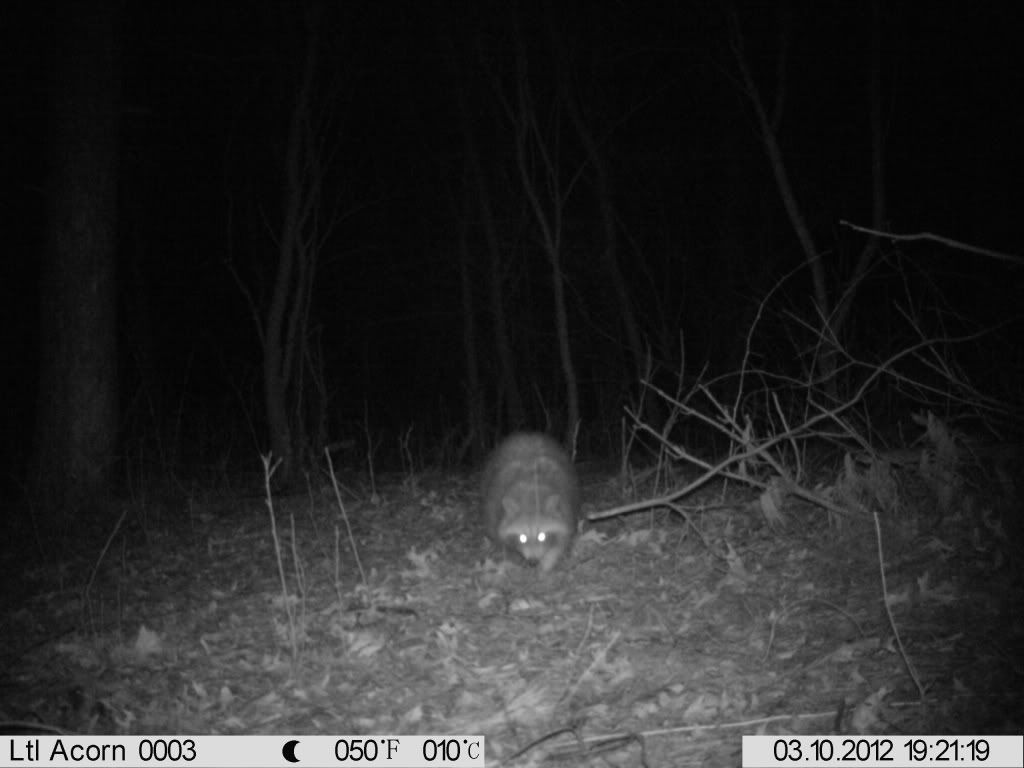
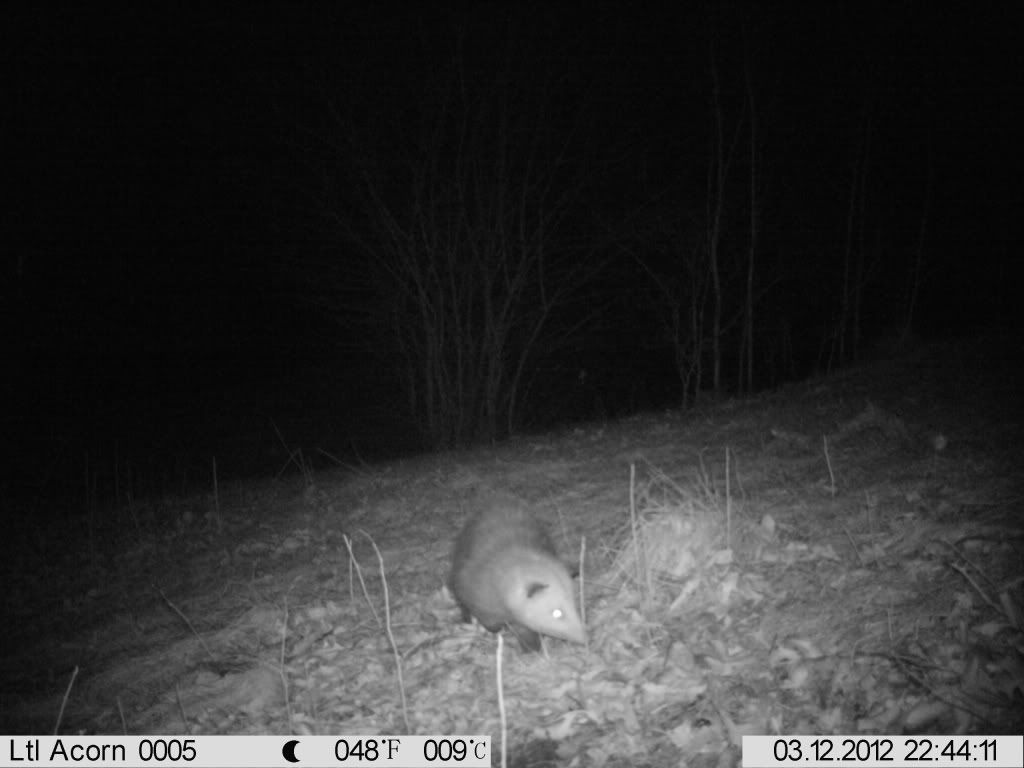
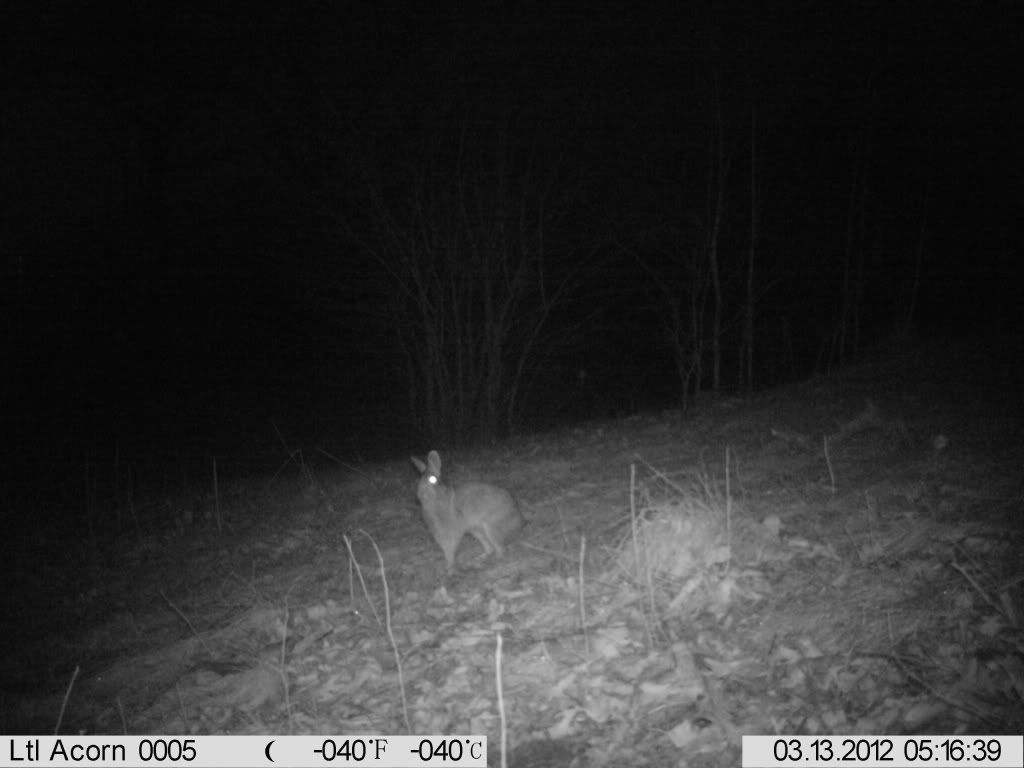


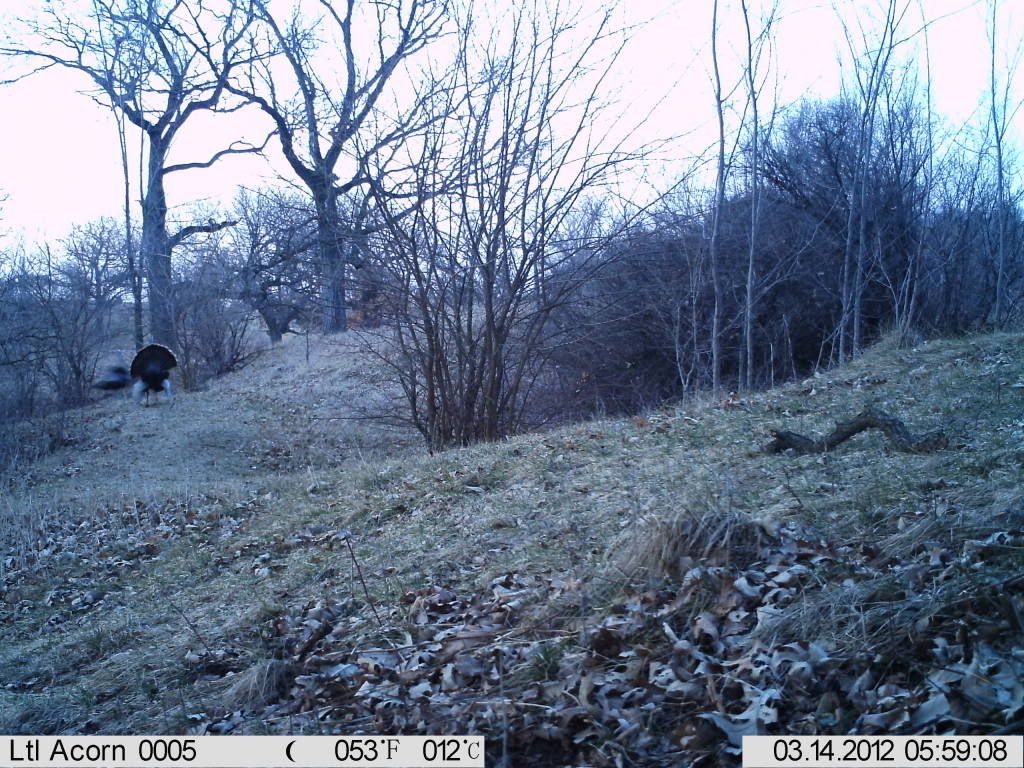


approaching the cage with a tarp - that is very clever.
ReplyDelete....although, if you're not careful it results in your shoes still getting stinky.....especially if it's windy and the tarp is blowing ;)
DeleteBut, seriously, the tarp blocks the spray...but it also keeps the skunk calm. If you approach slowly with the tarp in front of you, they can't see you and tend not to get as riled up.
I tie some lead sinkers for fishing nets to the bottom of the tarp to help hold it down if the wind is blowing.
Another trick is to fasten the top of the tarp to rod or dowel so that you can hold it up with one hand if need be (keeps your other hand free for other things).
I'm not a skunk-tarp expert, or anything, but it's worked for me!
Have you considered doing anything with those feral cats other than release them...?
ReplyDeleteWell....I don't own tthe property, so I'm limited.
DeleteNow that I know how many there are, I may try to organize a trip to the humane society with them i the future (if I get landowner permission, that is!).
This may be a silly question, but how do you know that is an Eastern cottontail?
ReplyDeleteI have little experience with camera-trapped lagos and we only have ECs where I live..so, so far it's been easy for me to ID. BUT, I was wondering if while I was in NC, and I got a lago, then how would I figure out if it's a marsh or EC?
Hi,
DeleteThese particular pictures weren't from NC, but where I live now...and we only have cottontails...
Where I used to live in NC was in the Piedmont, so not along the coast....thus, where I was in NC also basically only had cottontails. Thus, I never had to distinguis them from a marsh.
I can ask a colleague of mine at the NC Museum who who might have a better idea, and get back to you....
That's what I was assuming, the only species you had around was the cottontail. I guess I'm kind of 'thinking out loud' and trying to figure out how I would ID the different species. Thanks!
Delete